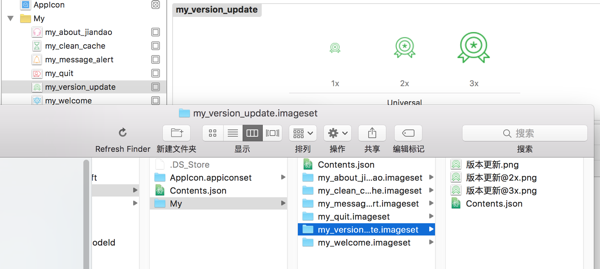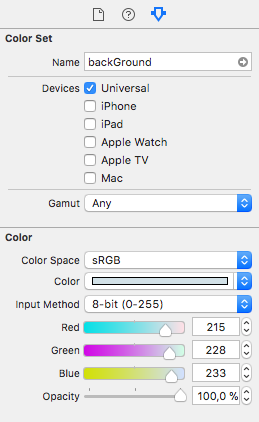
the above lines are necessary to include in plist file? What other things are necessary to include in plist file. If I am removing below lines from a plist file then getting 120X120 icon file missing. Missing Asset Catalog - Your app is missing the asset catalog file Then after I have tried with assets catalog and removed above key from ist file.

Then after just a few minutes, I got an error likeĪ value for the ist key 'CFBundleIconName' is missing in the bundle "xxx". First I have created App with assets catalog and not included a key for "CFBundleIconName". I was facing one weird issue from the past two days. The best solution, as hard as it seems, is probably to not fix that problem at all but to stop supporting resources in Podspec files and make resources_bundle mandatory for Pods that contain own resources.I am using Xamarin Forms. Yet the problem currently is, that every possible solution other than the two mentioned above would basically be an ugly hack and the Cocoapods developers are not happy implementing ugly hacks. There is an on-going bug report for this issue, you can find it here:
ASSETS.XCASSETS EXPLICITFILETYPE APPICON CODE
Note, though, that it is not enough to just alter the Podspec, all code that loads bundle resources must be adopted to load them from the correct bundle (the name will be known as when using resources_bundle in a Podspec file, you also must give the bundle(s) a name). Using resources actually has other disadvantages (resource files are not optimized, name conflicts can arise between different Pods), whereas using a resource bundle is safe, regardless if Pods are embedded as static libraries or as dynamic frameworks. Instead of resources s/he shall use resources_bundle as the Podspec documentation also strongly recommends. On Windows, the app icon appears in the app list in the start menu, the taskbar, the app's tile, and in the Microsoft Store. The downside is that your overall app size will grow a bit and app start time will increase a bit. On Android, the app icon appears as a launcher icon and throughout the system, such as on the action bar, notifications, and in the Google Play Store. All you need to do is to add use_frameworks! to your Podfile, either top level or just for a specific target. When you use frameworks instead of static libraries, the resources of Pods don't end up in the resources folder of your main application but in the resources folder of the built framework. There are currently two possibly solutions: Which one shall win? Which of these two files shall end up in the final application? And what about other steps that depend on this file? After which of the build steps do they have to run? This is a serious problem that Xcode cannot resolve. Yet if you integrate a Pod and this Pod also has an asset catalog, exactly the same thing will happen and a second Assets.car file is created and now Xcode has a problem: Two build steps both say they create an Assets.car file.
Xcode won't just copy these bundles, instead it will combine them, convert and optimize their content, and create a file called Assets.car that contains the content of all the assets catalogs in your project.
ASSETS.XCASSETS EXPLICITFILETYPE APPICON ANDROID
In your case the problem is that your Copy Resources build phase contains one (or more). These icons will need to be used in the Android app. While several steps can surely depend on the same input file, it cannot be the case that multiple steps produce the same output file as in that case, whichever step runs last would overwrite the output file of whichever step runs first and this means the resulting output file content would be unpredictable and that is an error in a build process that shall created predictable results! When I open the generated project in Xcode I have an asset catalog folder and the Target/General page also sees the icon name (AppIcon) I set as valid (clicking on the grey arrow takes me to the asset catalog page with images appearing), but no matter what I try the app itself never gets the icon. If neither step requires the output file of the other step, they can both run in parallel. if step A depends on an input file that is the output file of step B, step B surely has to run before step A.

To be sure that all build steps are performed in the correct order, yet as many steps in parallel as possible, Xcode needs to know for every build step which input files it depends on and which output files it will generate.Į.g.


 0 kommentar(er)
0 kommentar(er)
